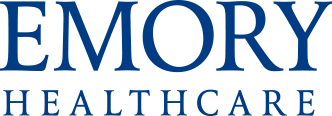The clinical term for difficulty swallowing is dysphagia. Several disorders cause dysphagia: neurologic conditions (such as stroke), scar tissue, muscle spasm, esophageal or laryngeal reflux (GERD or LPR), autoimmune disorders and trauma or injury.

Dysphagia - Swallowing Disorders
Swallowing Disorders
Anatomy of the Condition
Muscles in the neck work with muscles in the throat (pharynx) to swallow. The muscles in the neck are known as strap muscles. The throat has constrictor muscles up high and also further down the cricopharyngeus. This lower part of the throat (upper esophageal sphincter) is very close to the top of the esophagus. Together, these muscles coordinate with the larynx (voice box) to swallow. Swallowing moves food, liquid, and medication into the esophagus and stomach.
Symptoms
The symptoms of swallowing disorders may include:
- Feeling like food or pills get stuck
- Pain in the throat when swallowing
- Increased effort with swallowing
- Getting tired during a meal
- Feeling liquids going down the wrong way
- Weight loss
Common Conditions
Common conditions related to swallowing disorders include:
- Cricopharyngeal achalasia
- Cricopharyngeal spasm
- Cricopharyngeal bar
- Disuse atrophy of the swallowing musculature
- Muscle tension dysphagia
- Zenker’s diverticulum
Diagnosis
Our physician will discuss your symptoms and medical history. This conversation will include previous surgeries or treatments. We will perform a thorough head and neck examination. We may use a flexible endoscope to see the throat, often during swallowing.
Our evaluation team often involves several members of the Emory Voice Center. It may include a speech language pathologist. You may need further testing after the office visit. This testing might include swallow studies, reflux testing, testing of the muscle function or endoscopy.
Treatments
Non-operative treatment can include improving the hydration of the throat and swallowing therapy. Diet modification may help you. Sometimes medication can help, particularly if reflux is contributing.
In some cases, we may consider more invasive treatment. These treatments include stretching open the top of the esophagus (esophageal dilation). We may inject medication to relax the top of the esophagus.
An abnormal sac or pouches that appears on the swallowing apparatus, often called a diverticulum, may also require surgical intervention. Oftentimes, this can be done through the mouth with no external surgical incisions.
Related Conditions
Supragastric Belching, also referred to as chronic belching, is a physiologic result of aerodigestive dysfunction. Belching can be so severe that it also causes a symptom of rumination - or food/liquid being sent from the stomach back up into the mouth/throat. This is a very uncomfortable problem that has a huge impact on quality of life.
Treatment of this disorder can include both swallowing and breathing strategies to control and eliminate these symptoms. Specialized care may involve referral to our partners in gastroenterology.
Retro Cricopharyngeal Dysfunction, also known as "No burp syndrome," is caused by a muscular imbalance in the sphincter muscles in the junction between the esophagus and the pharynx. This is a painful, debilitating condition in which the impacted individual is unable to vent gases naturally or belch. This can cause bloating, nausea, abdominal discomfort, and the feeling of something stuck in the throat. This is a treatable condition which involves procedural intervention with a specialized laryngologist.
Related Care at Emory
News
Emory Healthcare news from the Emory News Center
